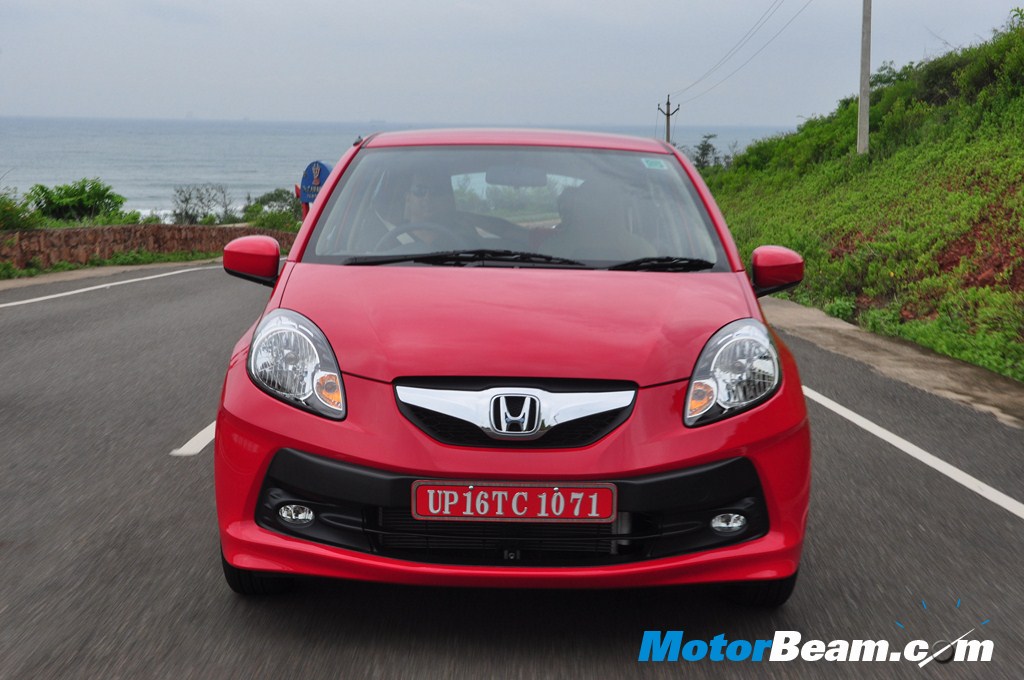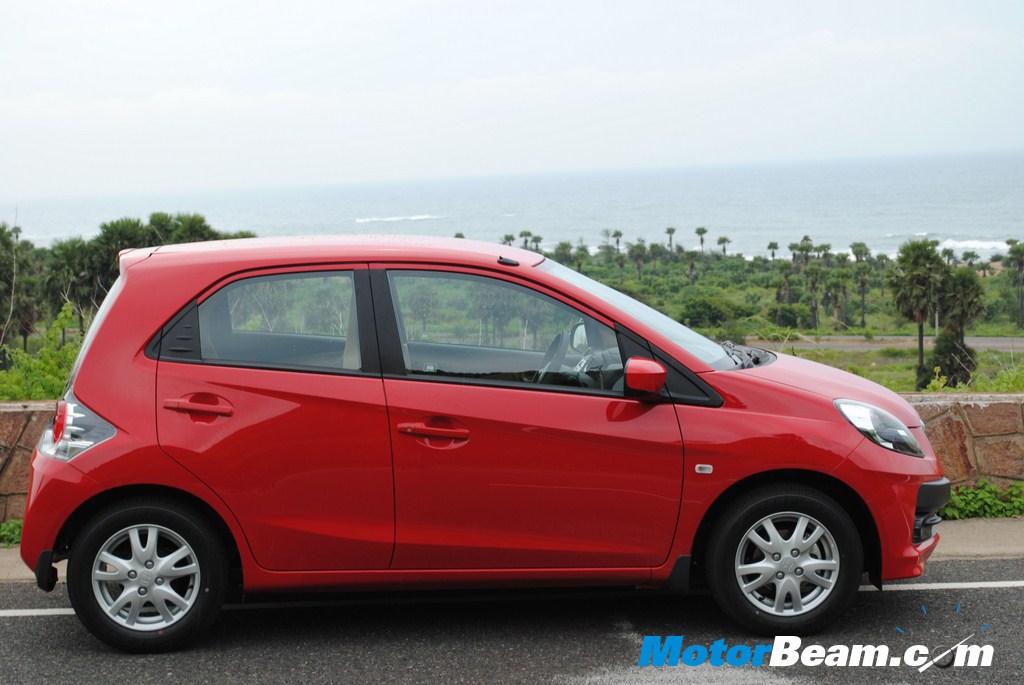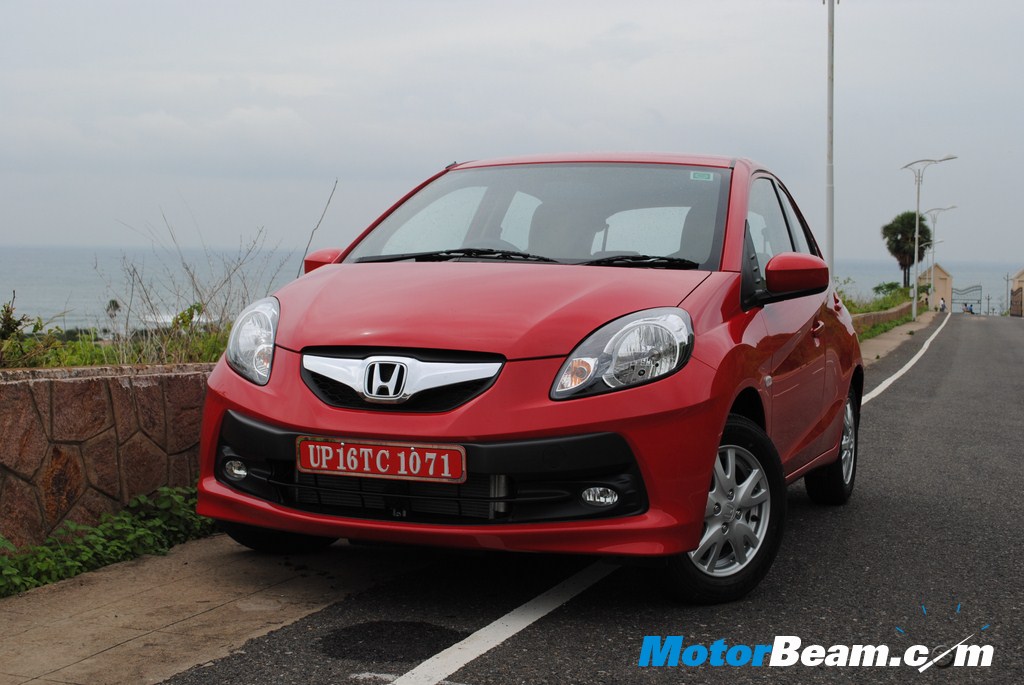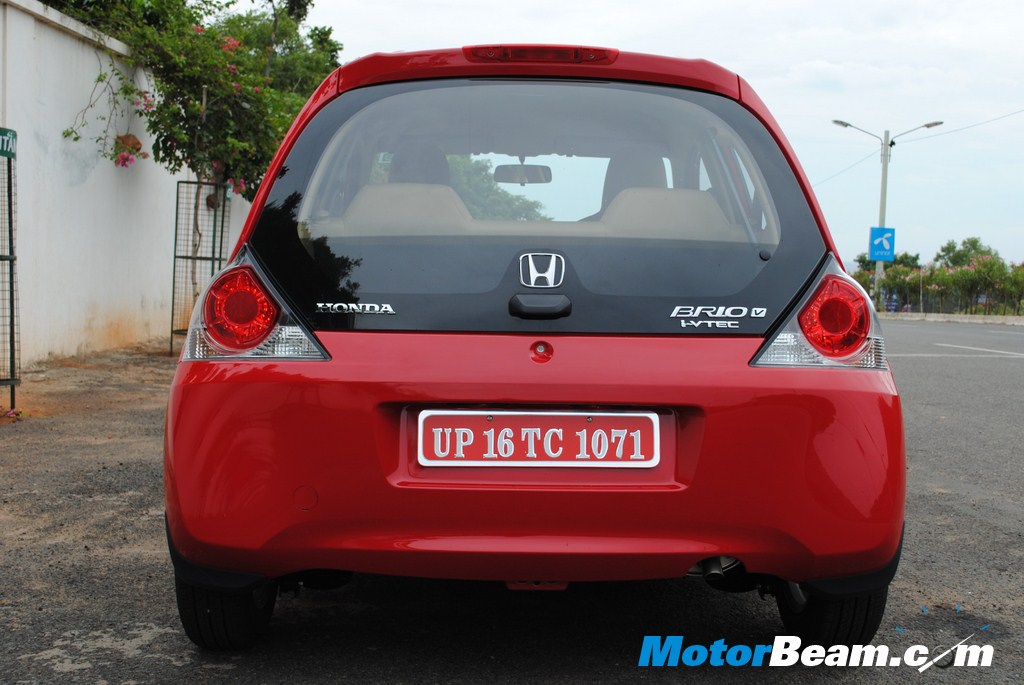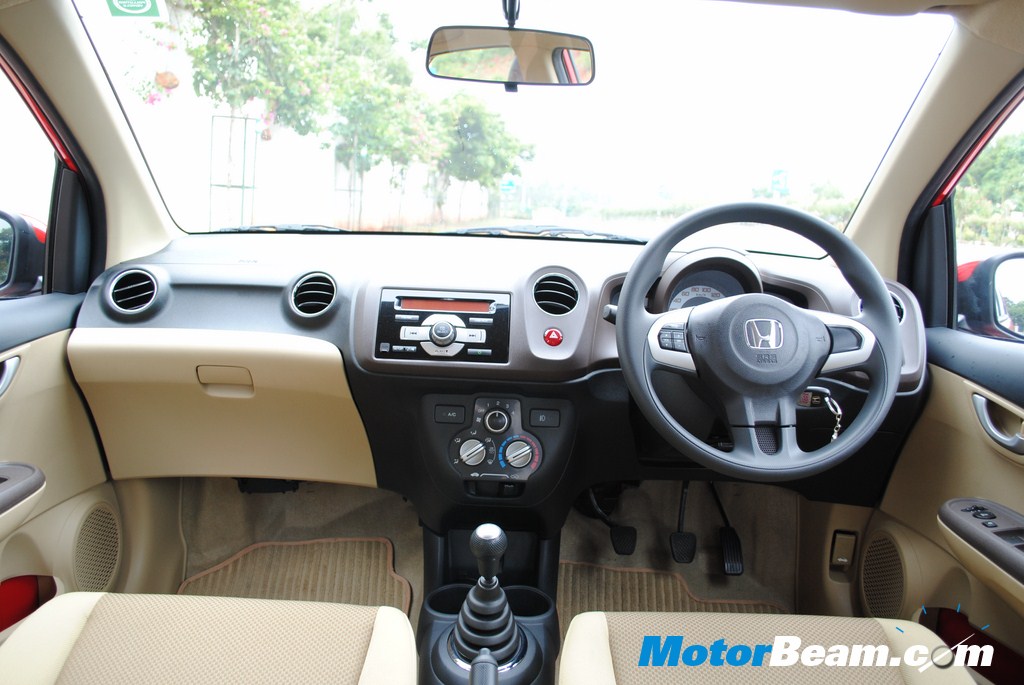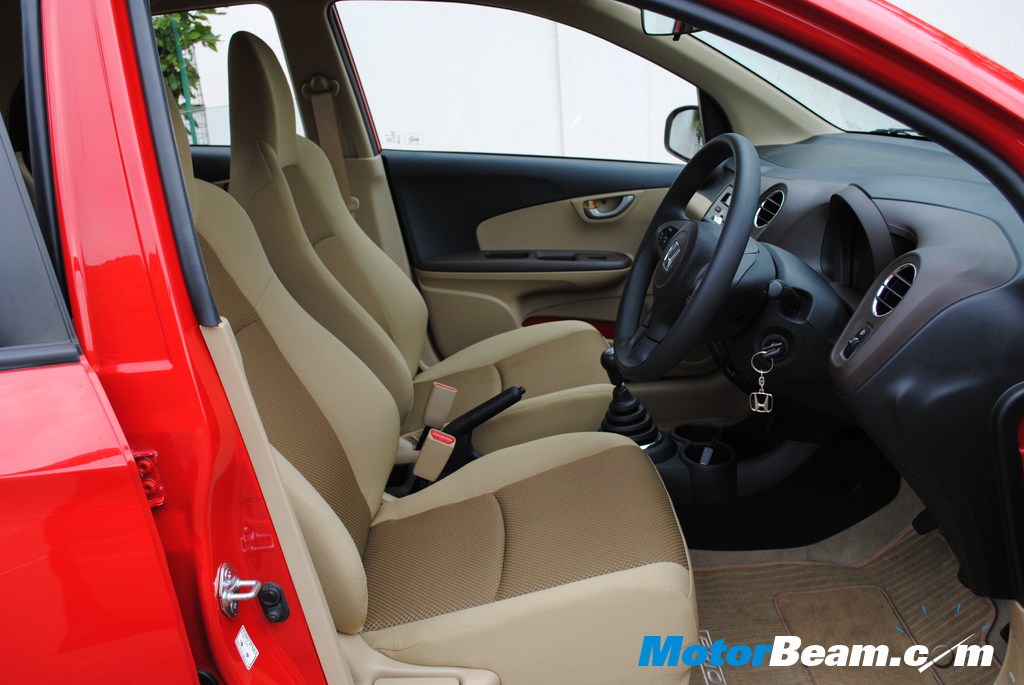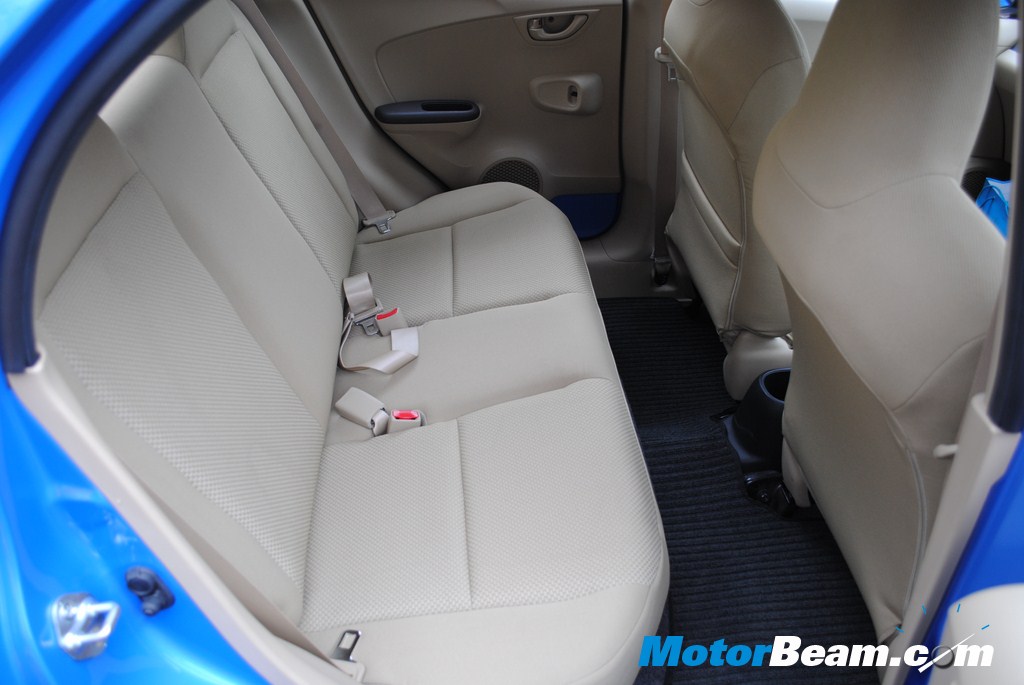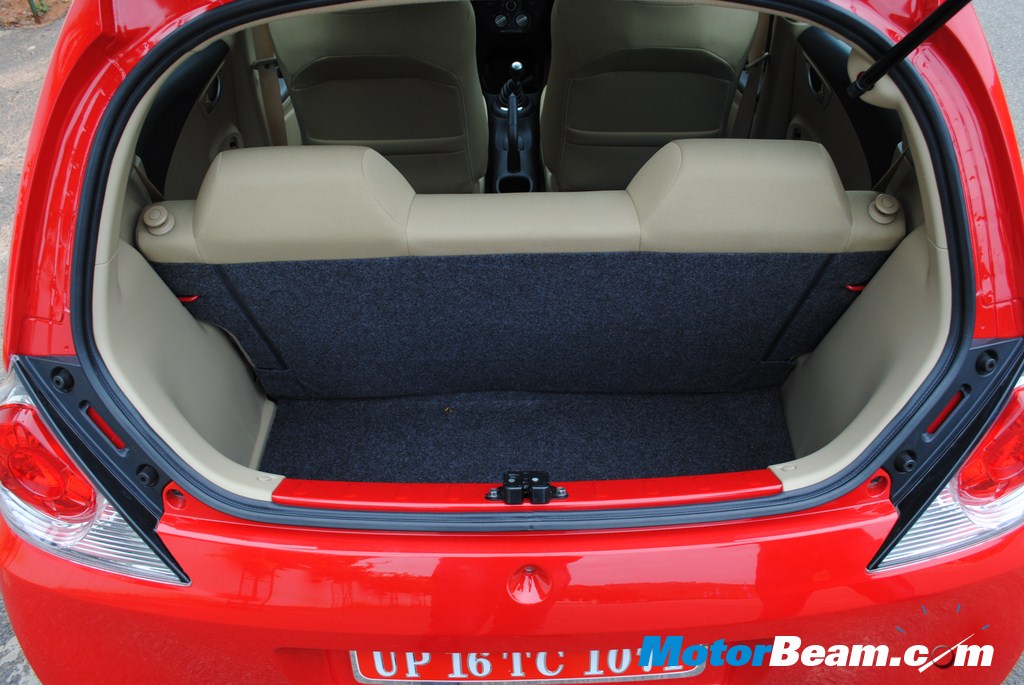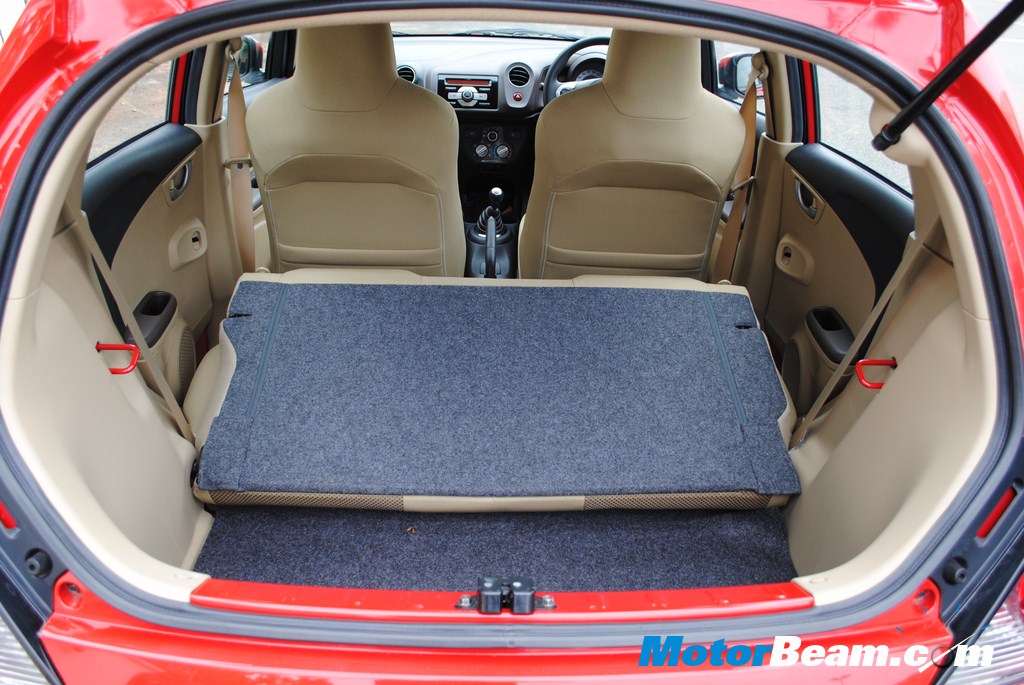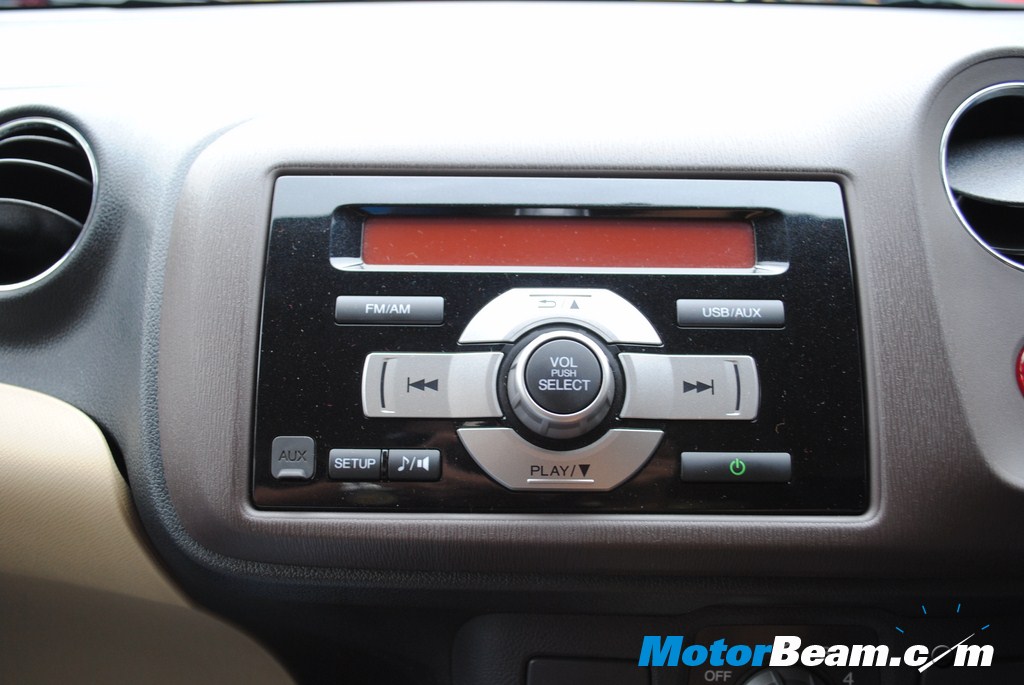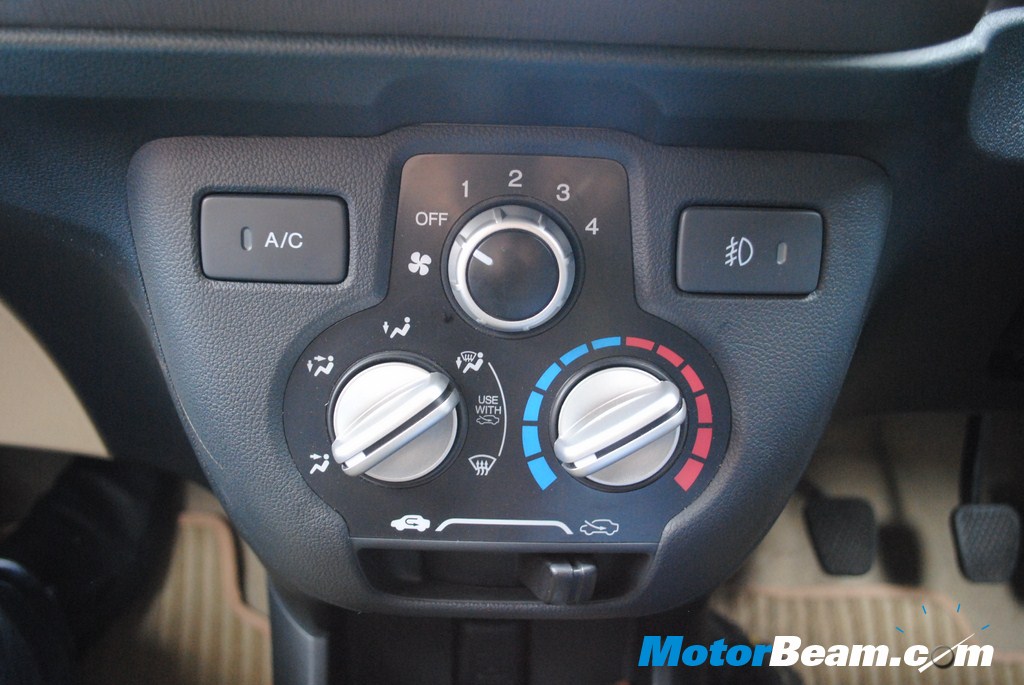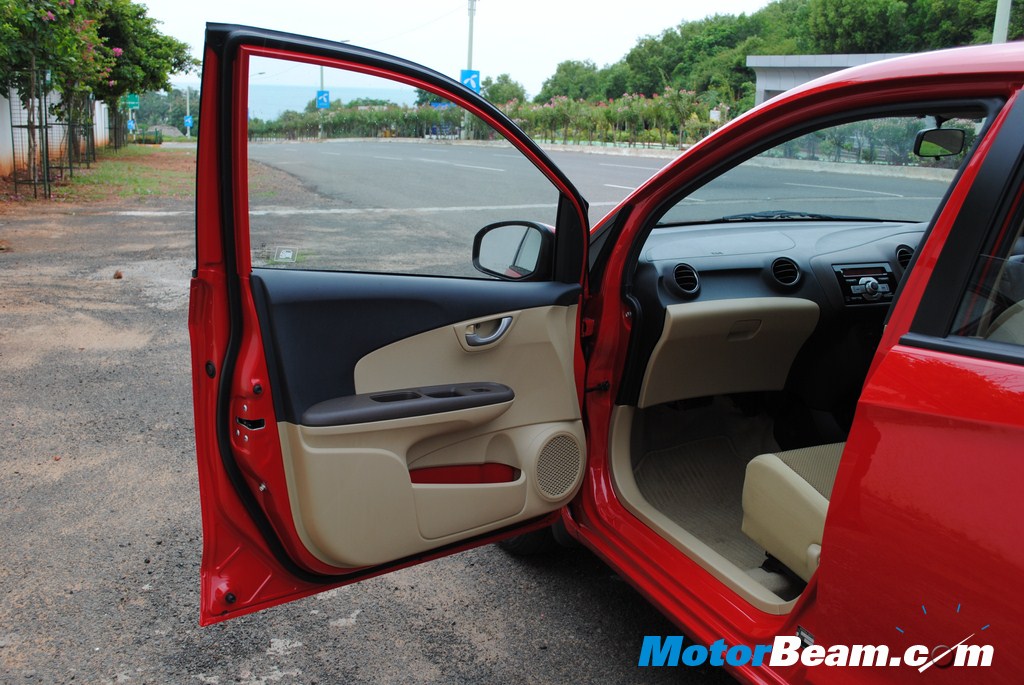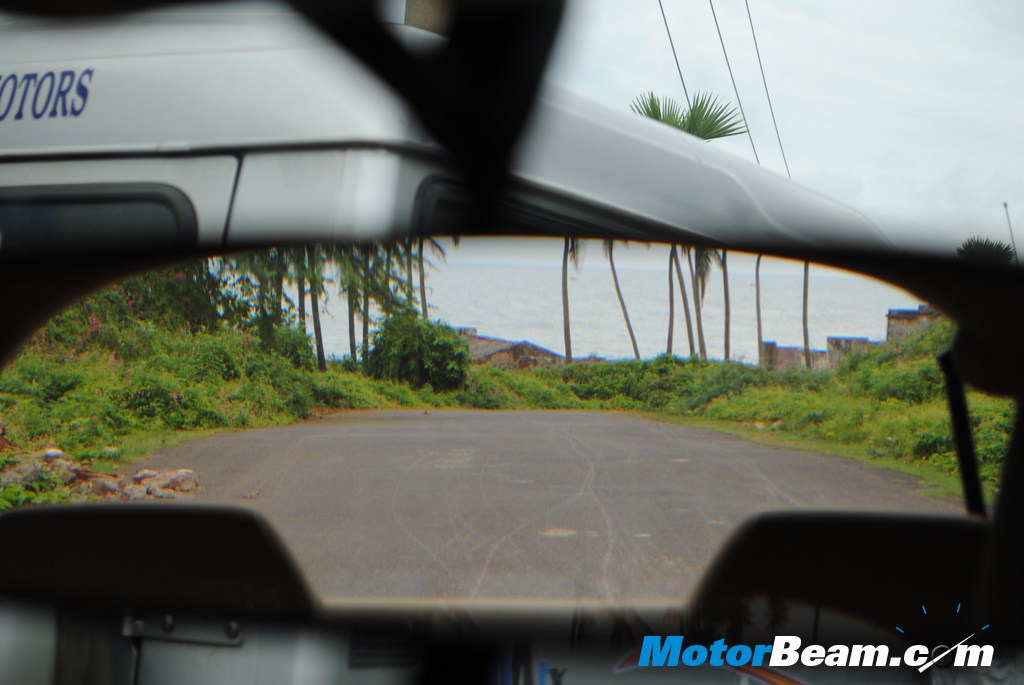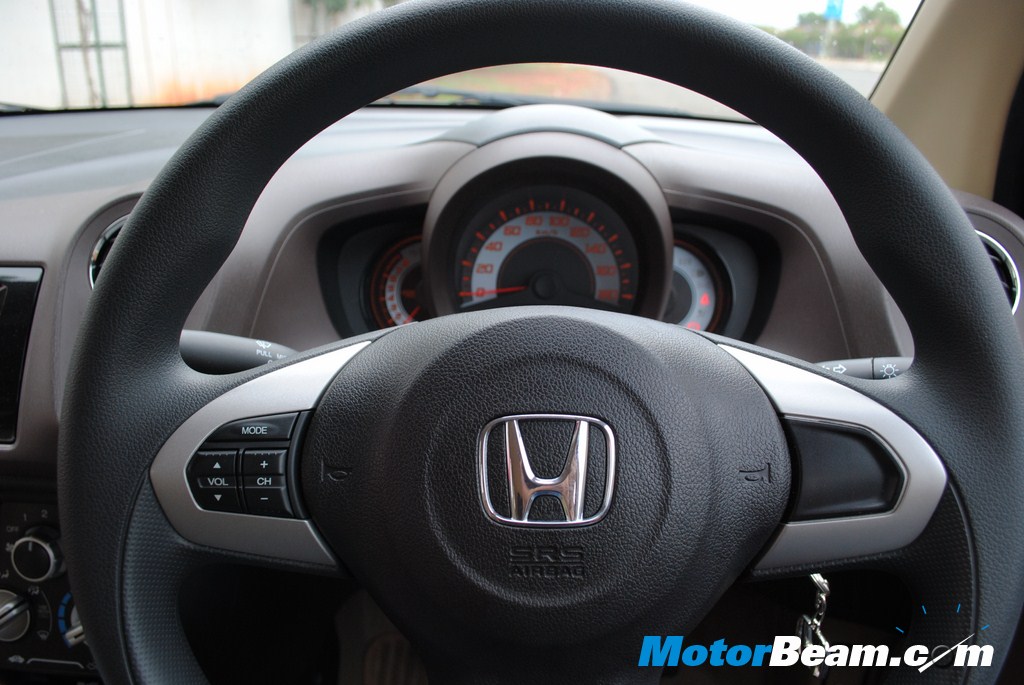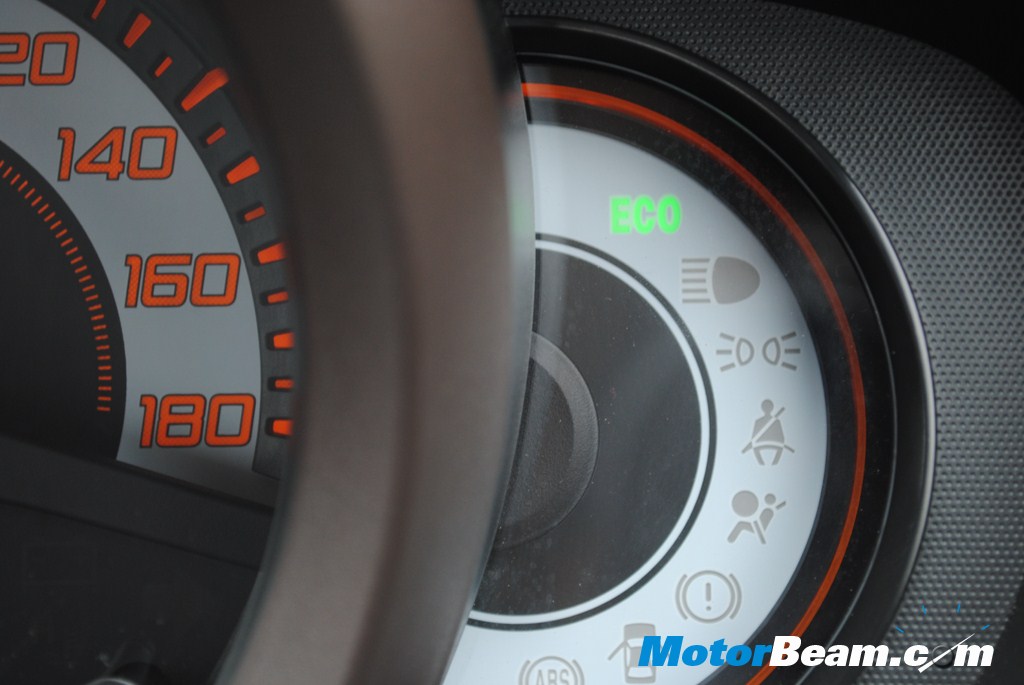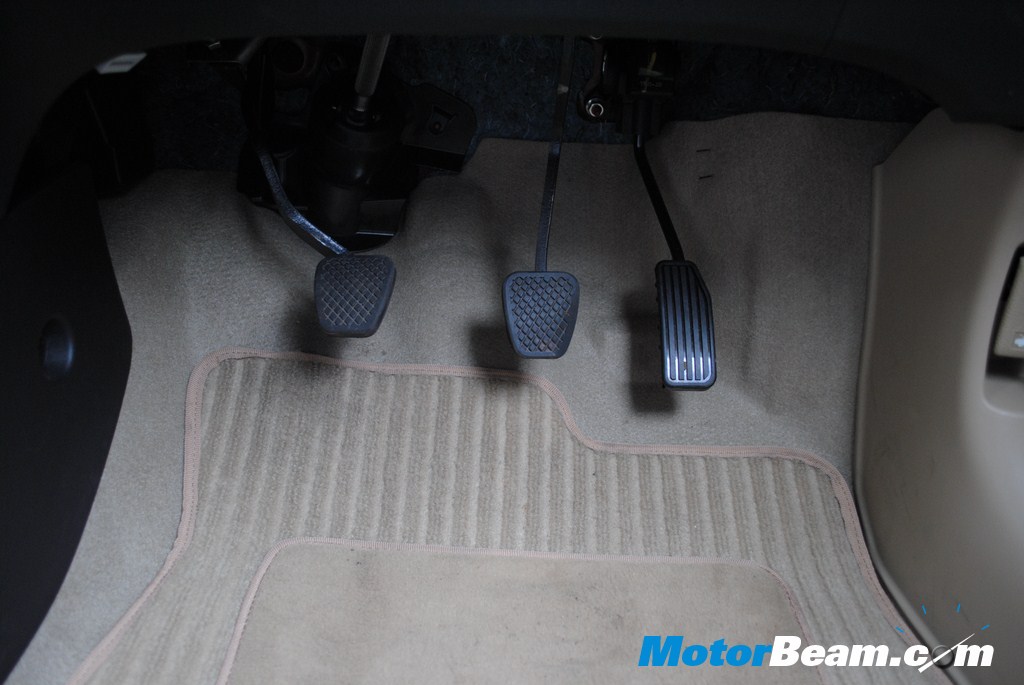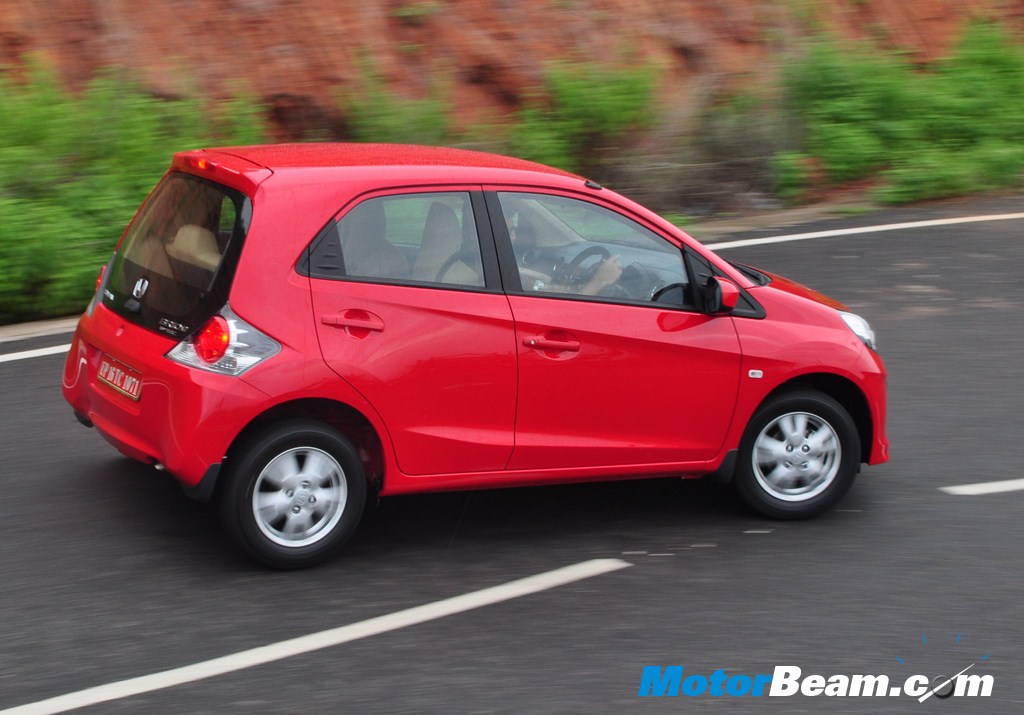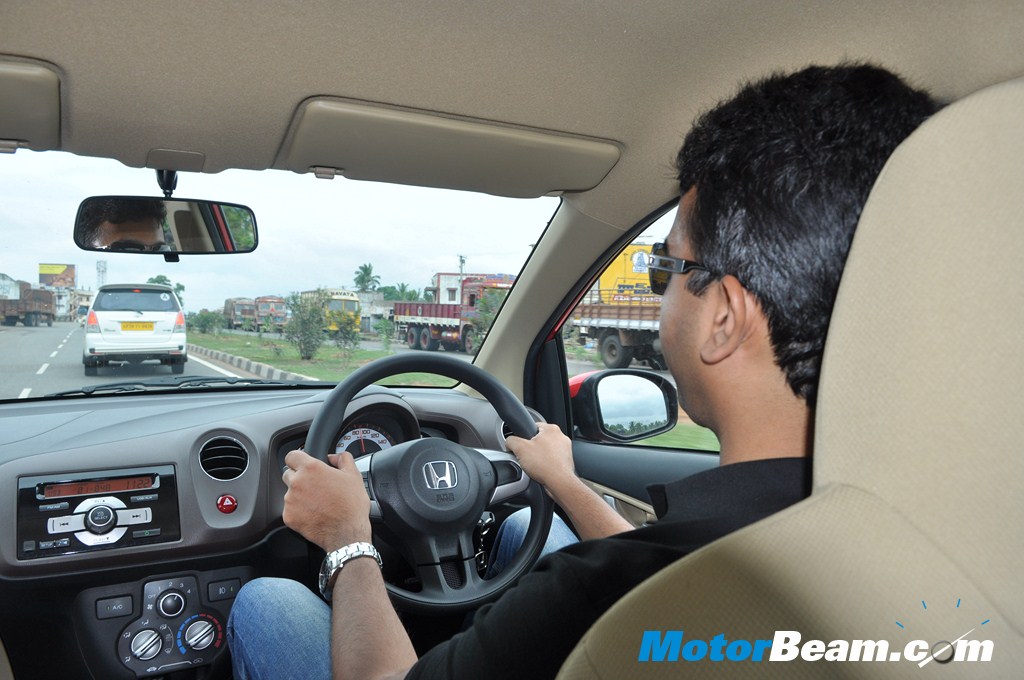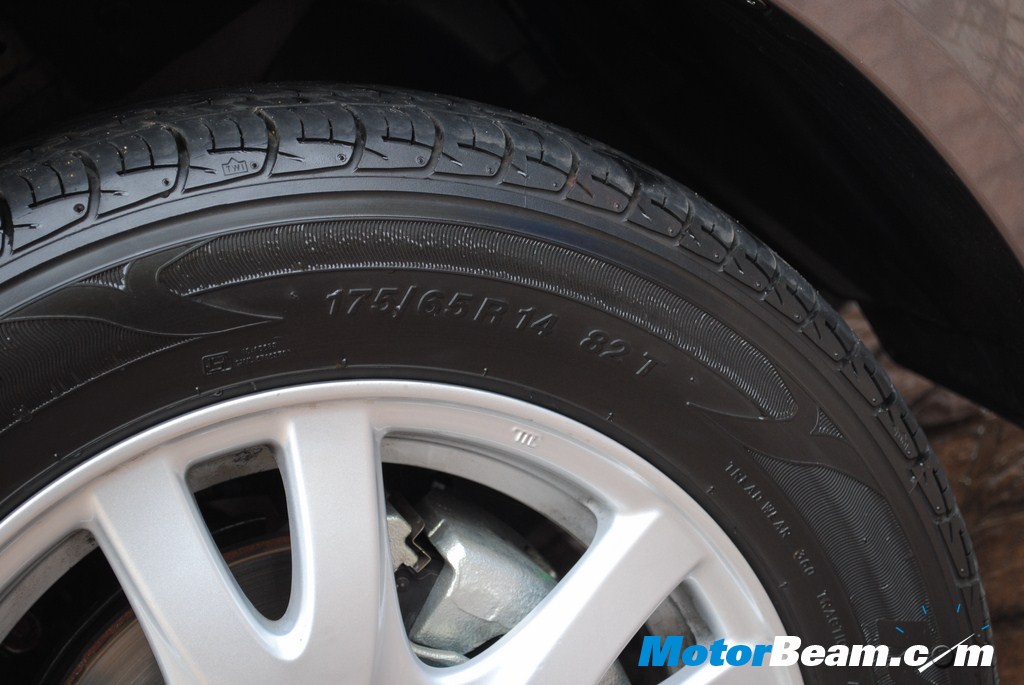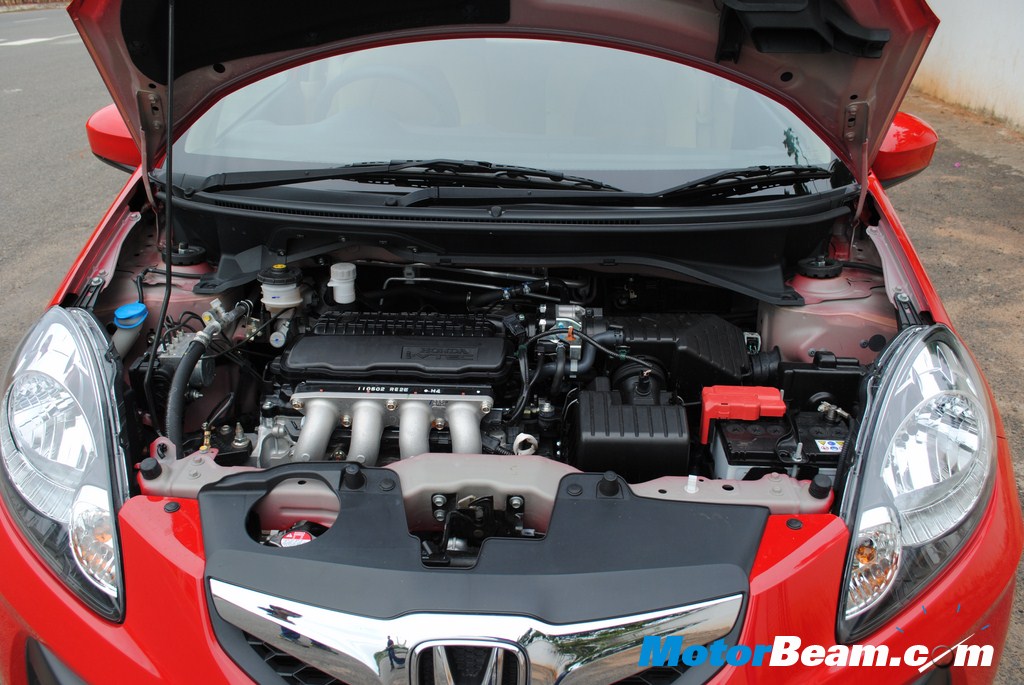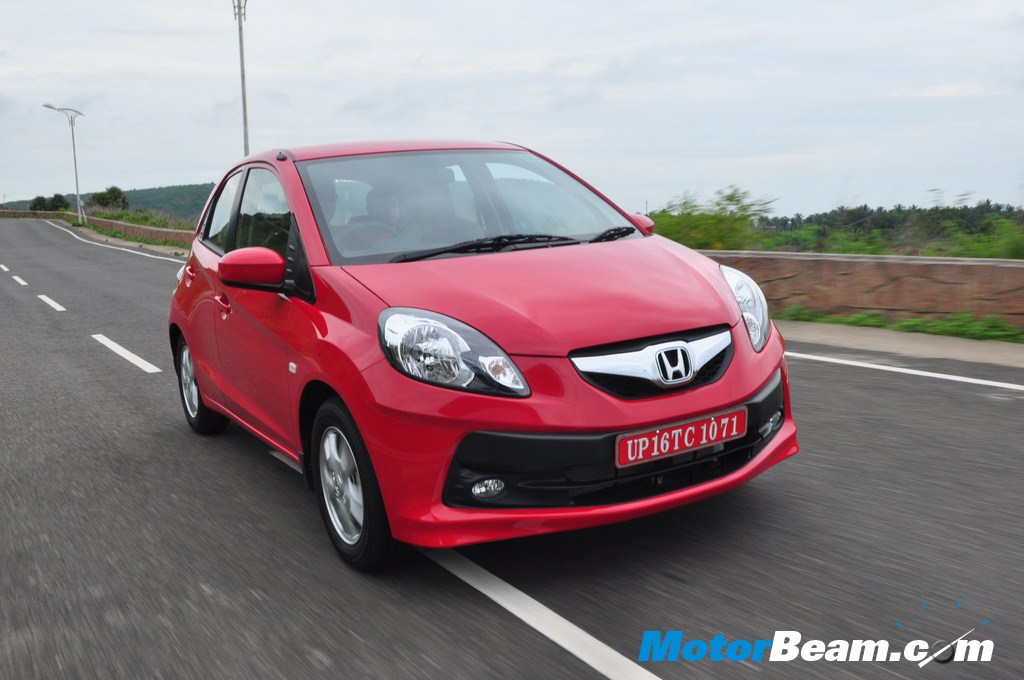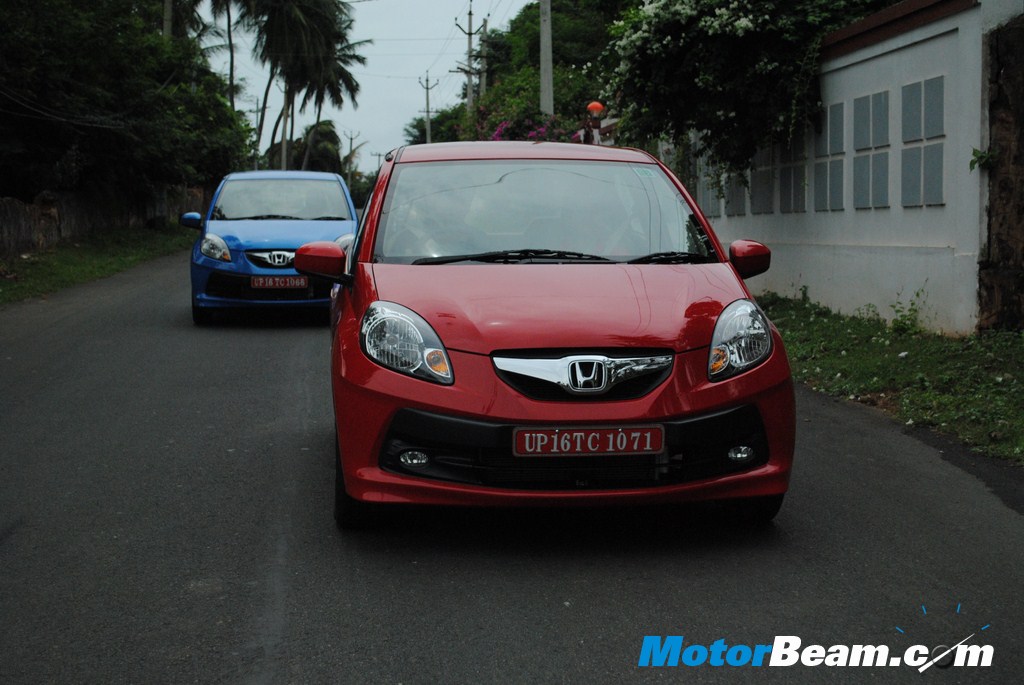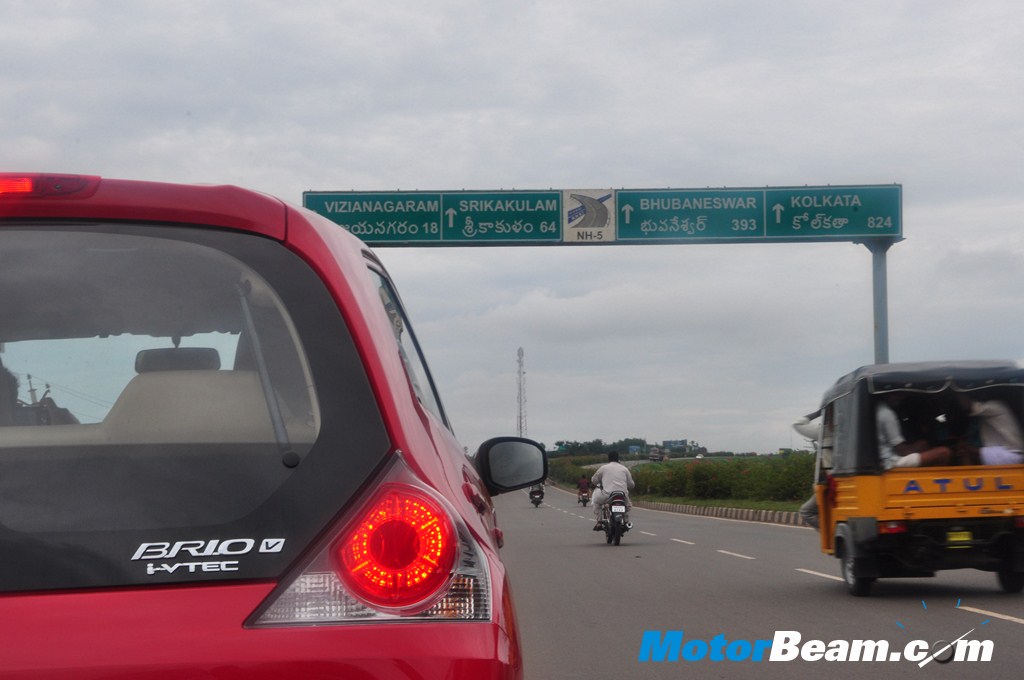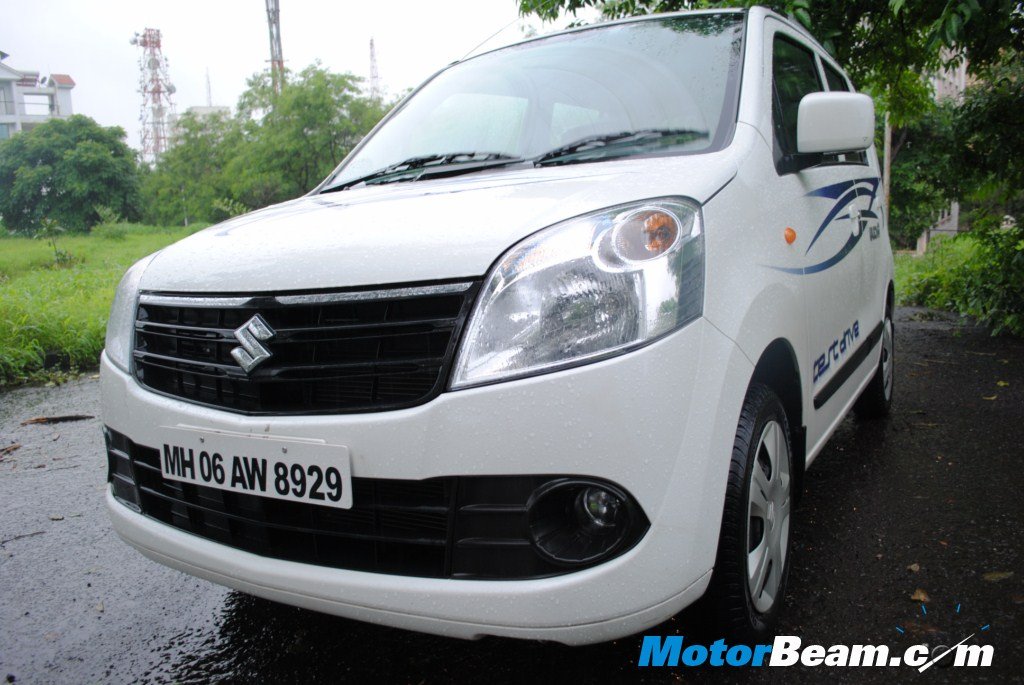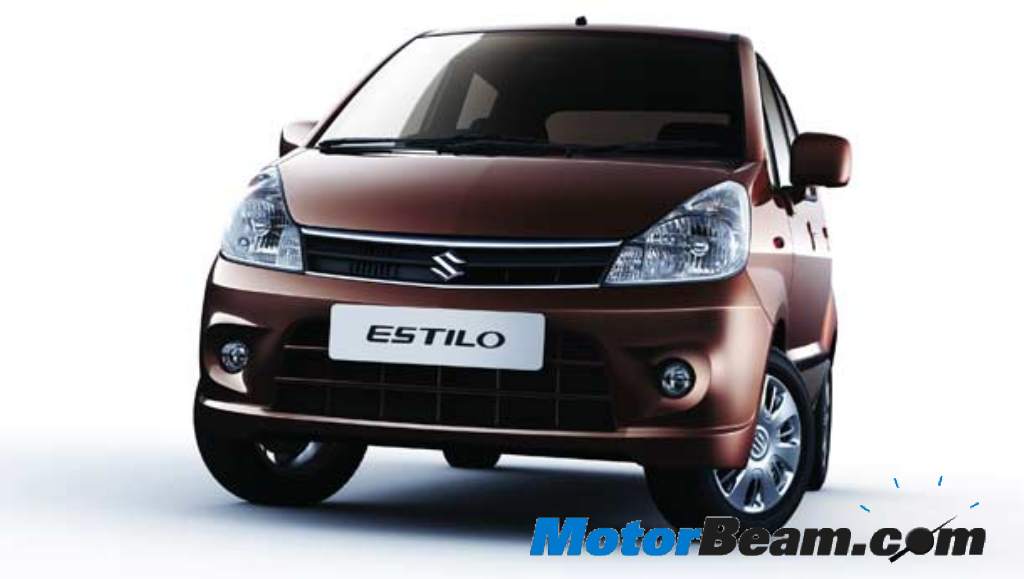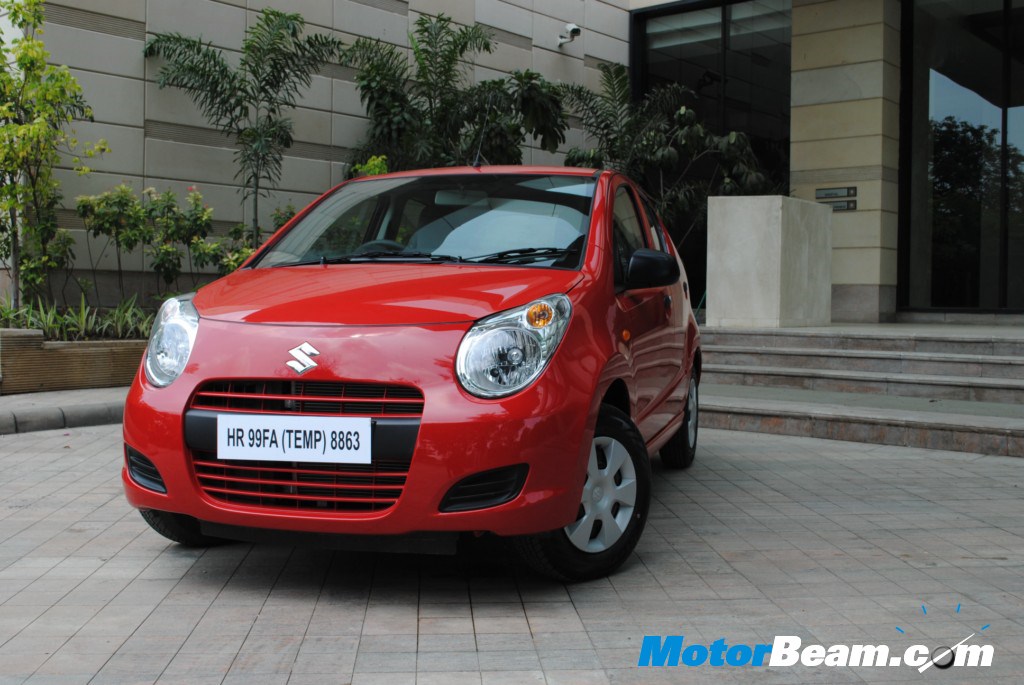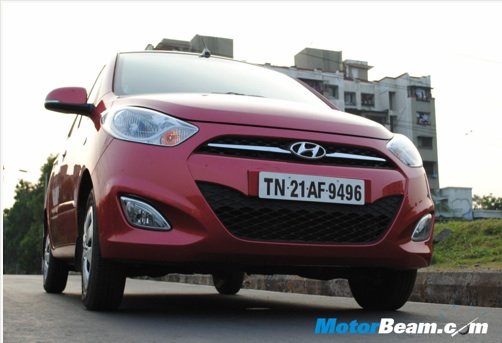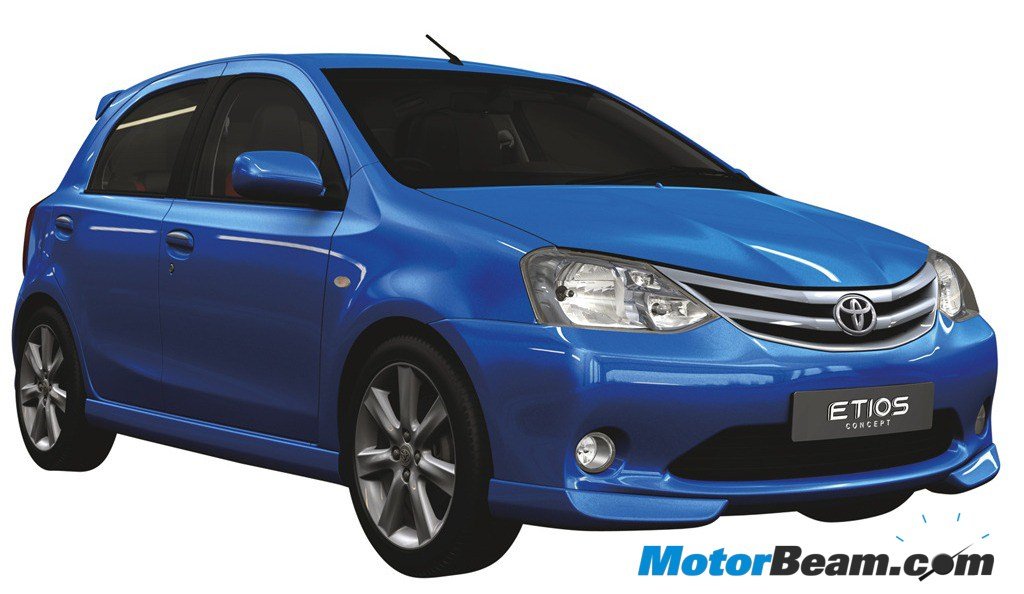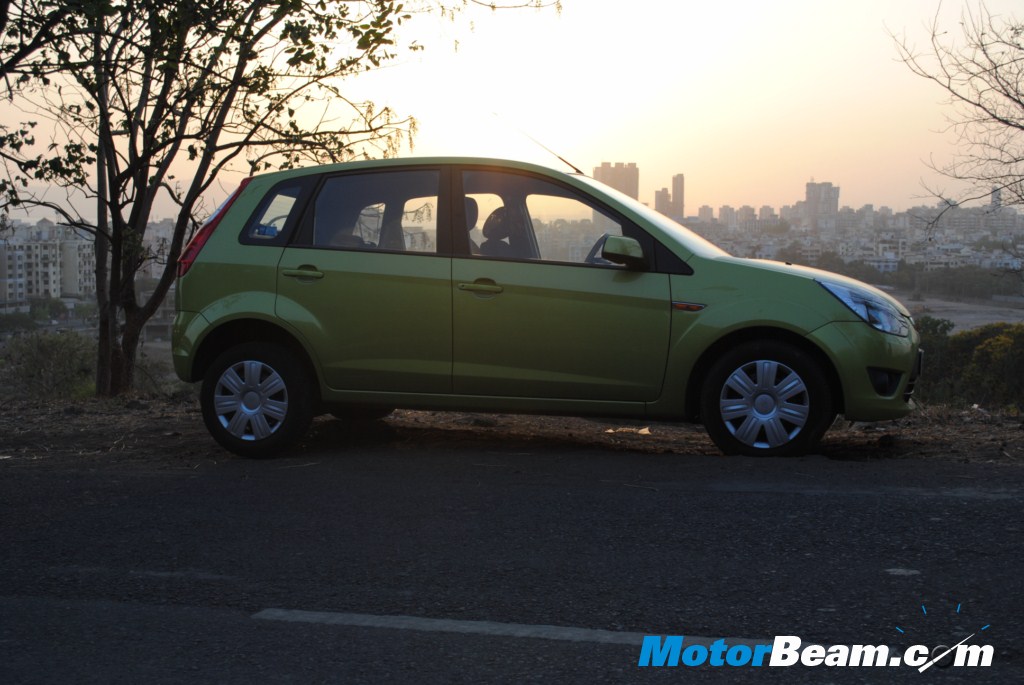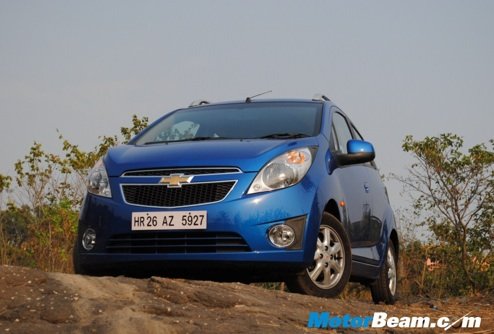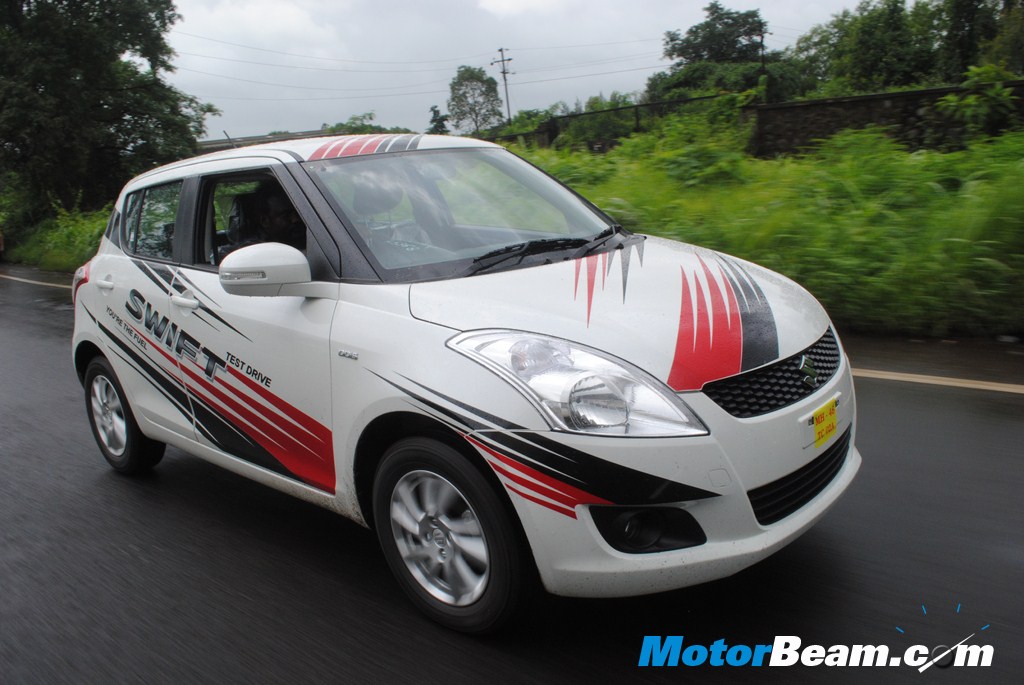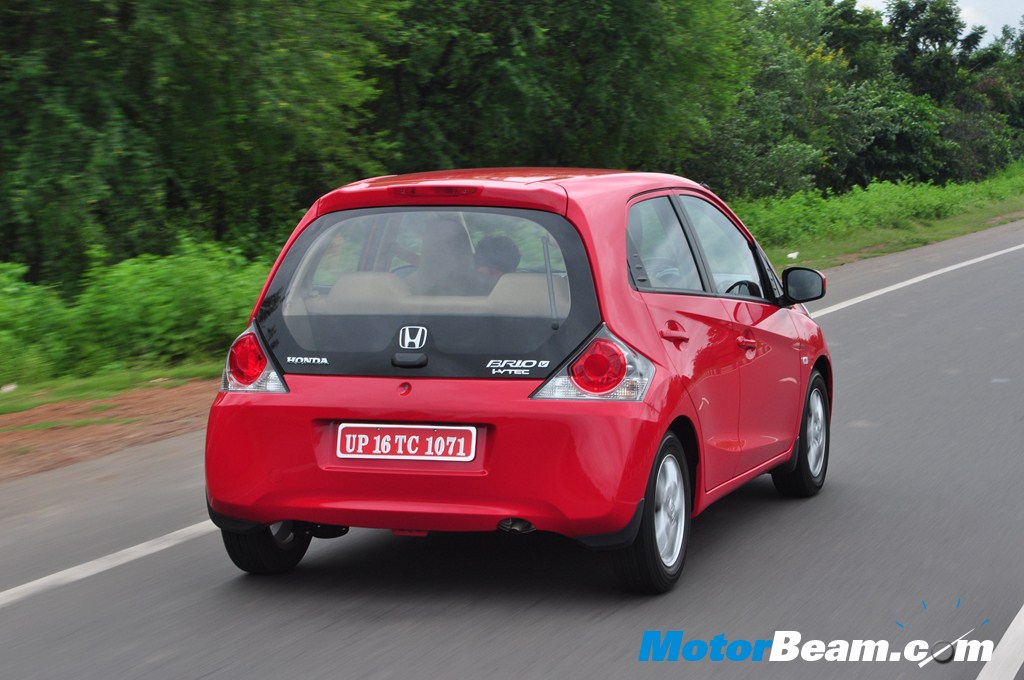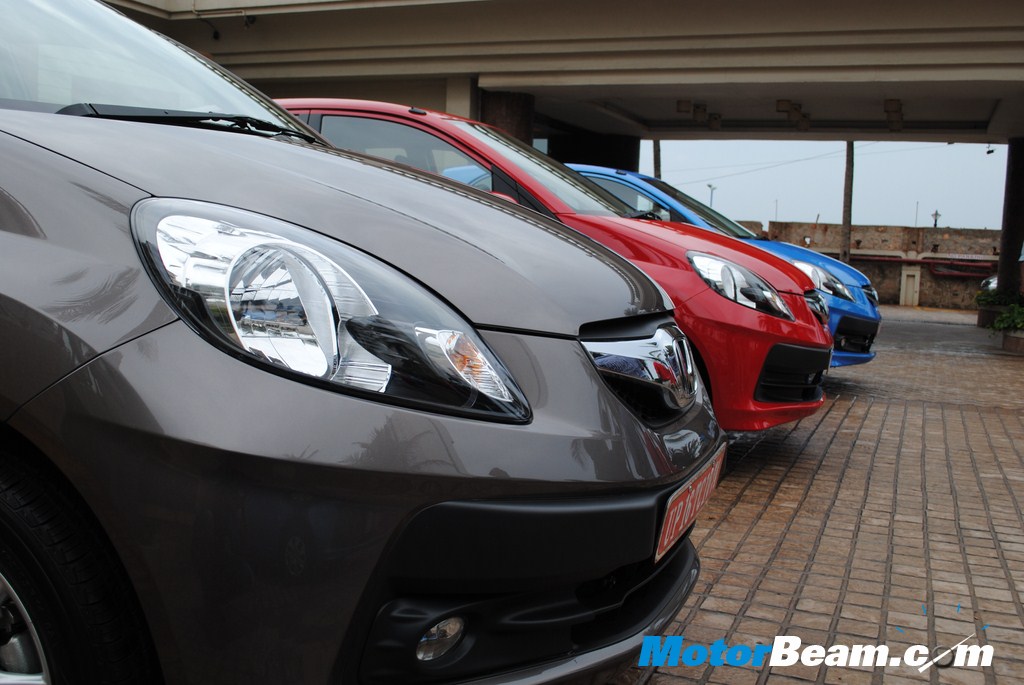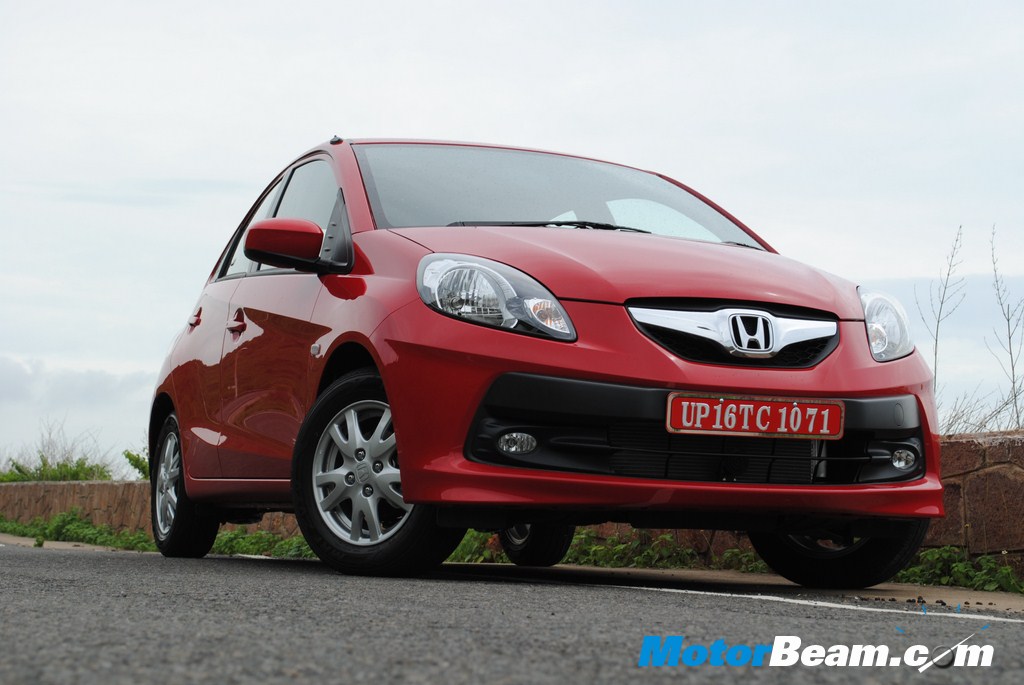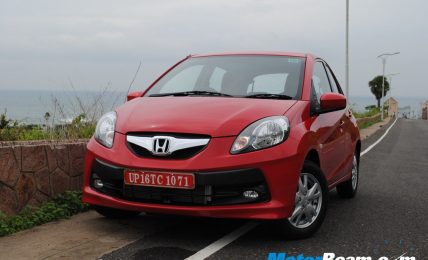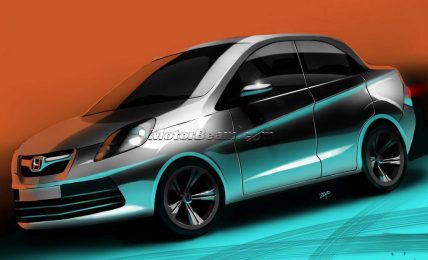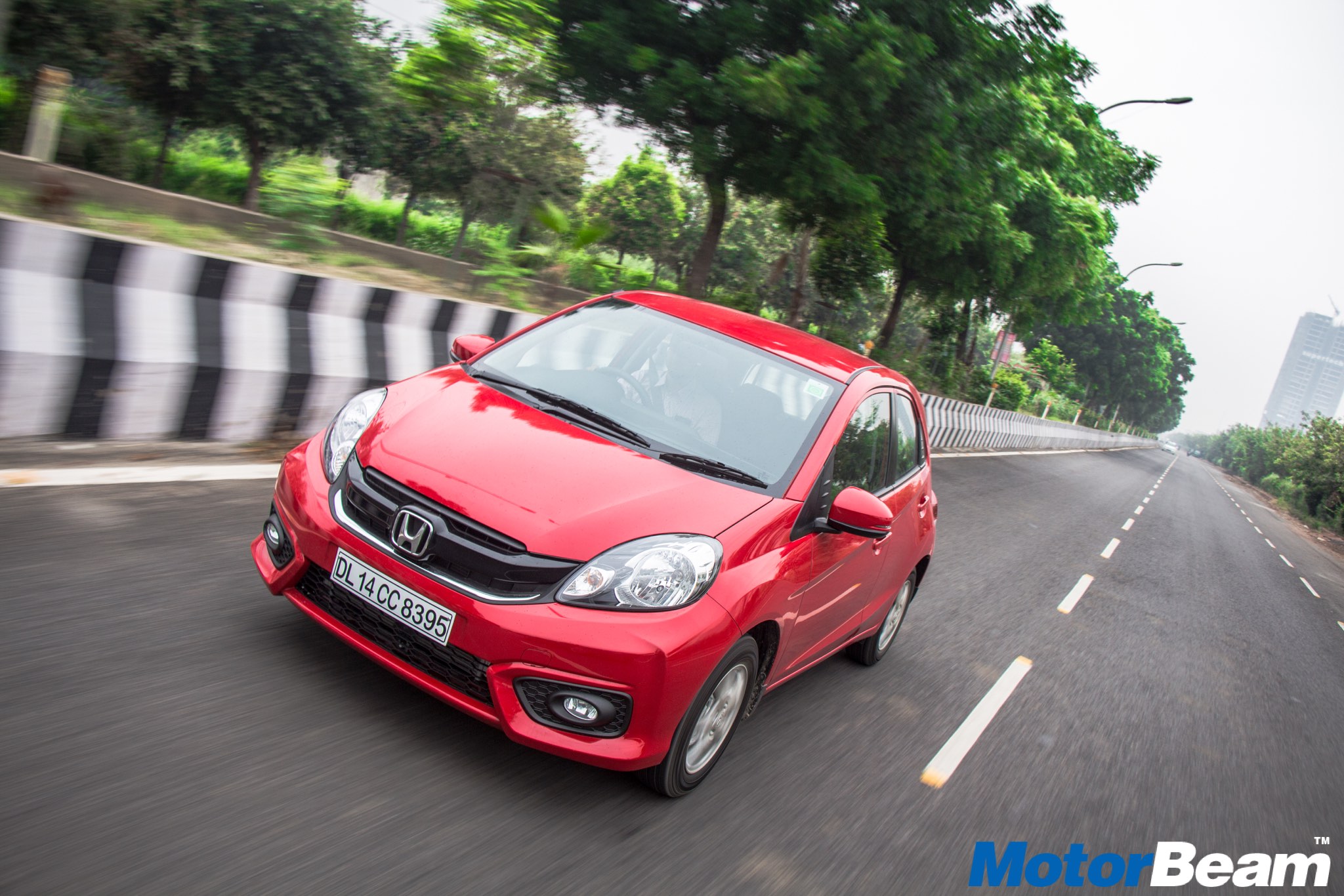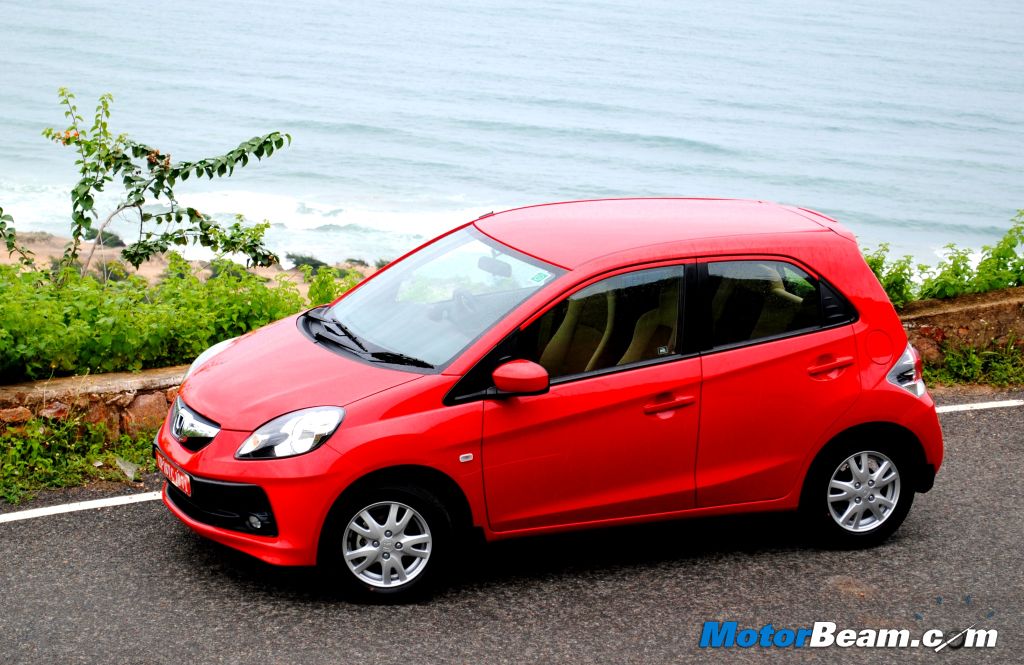
Honda Brio Review
Car Tested: 2011 Honda Brio 1.2 i-VTEC
Price OTR Mumbai: Rs. 4.6 lakhs (E), Rs. 5.06, lakhs (S), Rs. 5.71 lakhs (S Option), Rs. 5.94 lakhs (V)
Ever since the launch of the first generation City, Honda has been looked upon as a premium brand in India and rightly so. The Japanese car maker has been doing good numbers even today, wherein most of the competition now comes with both petrol and diesel options. Demand for diesel cars has grown beyond expectations and has caught Honda on the wrong foot with the company having no diesel car in the pipeline for another couple of years. The City has been resisting its diesel competitors and is still doing fairly well, which speaks volumes about Honda products. A recent price cut on the City and Jazz have further strengthened the company’s sales and with the prices of the Jazz starting at Rs 5.5 Lakhs, undoubtedly its the best buy in the segment.
The latest from Honda comes in the form of the new Honda Brio which will be placed as Honda’s entry level car in India. B segment cars account for the maximum sales in the industry and Honda wants to get into the segment with a quality product on their hands. The Brio has been designed specifically for the Asian markets, India and Thailand to be precise. The Honda Brio has been launched in Thailand early this year and will be finally seen on the Indian roads by the end of this month.
Honda’s extensive R&D studies have come to suggest that Indian consumers look for a hatchback which has road presence, is spacious inside and returns good fuel efficiency. The Brio’s designers have kept these points in mind during the development process. The concept has been derived from Honda famous Micro Metropolitan Jet and key areas addressed by Honda are larger area of visibility, better knee room and ample boot space. We drive the all new Brio and find out whether it proves to be a game changer for Honda.
Exteriors – On the outside, the Brio can pass as a cute looking car. Paint quality feels good and is similar to the one seen on the City. From the side, larger windows are conspicuous and the design stands out by sharp lines running upwards and backwards. Notice that there is a complete absence of the front and rear quarter glass, this gives it a very airy feel. The Honda Brio is been designed aerodynamically. Light weight alloy wheels, short rear spoiler and edge shaped bumper provide optimized air flow and reduce the under body turbulence respectively. Even the outside rear view mirrors are said to be aerodynamically efficient. Old fashioned pull up antenna looks dated but we assume smalls thing here and there are done keeping costing in mind.
Large chrome plate with the Honda emblem is the most striking feature of the front. Blackened out headlamps look great and add an appeal to the cars exteriors. Air dam is large and also incorporates the fog lamps. There were two variants on our drive, the V and S. The only visible difference between the two were alloy wheels, fog lamps and seat fabric (dual tone in the V and single tone in the S.). ABS and Airbags were present in both. Honda has not confirmed the exact specifications and the number of variants, this will be available to us at the time of launch, later this month.
The rear is the most striking part of the Honda Brio and this was unanimously agreed to by majority of the journalists on the drive. The large glass boot which is blackened out at the bottom not only looks good but also provides best in class rear visibility. The logo too, stand out better on the black background. Triangular rear light cluster sports large stop lamps and the usual reverse and indicator lights. Rear wiper and defogger was conspicuous by its absence on the top of the line variant.
Interiors – The view from inside is of quality interiors. Honda has not compromised on interior quality with the Brio. We all know that the Brio will sit below the Jazz, yet the interiors feel premium and upmarket. Fit and finish is good and we struggled to find a single inconsistent panel gap. Plastic quality feels better than most cars in the segment or even a segment higher up.
Seating position is comfortable and the front seats sport two tone upholstery in the V variant and a single tone in the S. Front seats provide good back support and though we are not fans of the integrated headrest, it was pretty comfortable. Legroom and especially knee room is adequate for a six footer thanks to a scooped out dashboard. Under thigh support was strictly average. The front seats are relatively thin. This is done to ensure better legroom and knee room for the rear passenger. On the downside, if the rear passenger is sitting with his leg poking into the seat, the front passenger is bound to take notice.
Rear seats offer generous legroom and knee room, impressive for a small car. This is possible due to the convexing front seats. Being over 6 feet in height i was comfortable in the rear seat apart from the headroom which fell short for my height towards the rear. Integrated head restraints are not high enough to provide good support. Apart from that, the rear seat feels roomy and airy owing to a large window size and no quarter glass. Back support was good too. Notice that the bump in the middle is almost flat, making it easy for a middle passenger to accommodate his legs.
Boot space is small but should be adequate for day to day stuff. Loading lip is placed high, so you have to lift up your luggage before placing it in the boot. A set of 4 alloy wheels comes with the top variant, the spare is a steel wheel.
The rear seat can be completely folded to make up for the shortcoming of the boot space.
2-din music system is integrated into the dashboard and provides USB and Aux support. 4 speakers are provided, one in each door. Sound quality is above average and we particularly liked the bass of the system. Audio controls for mode, volume and channel are provided in the steering wheel for easier accessibility.
AC boasts of simple controls and cools the car quickly. Even the rear cools in no time.
Getting into and out of the car is easy with the doors opening to almost 90 degrees.
Rear visibility is best in class owing to the large glass boot. This also aids in easier parking into tight spots. This is what you see in the rearview mirror.
Steering is light and good to hold with the controls easily accessible. The 3D triple analog instrument cluster looks futuristic and the multi information display shows you the trip meter, odometer and fuel efficiency. This will be common across all the variants of the Brio. Distance to empty was not mentioned on the MID.
An ECO light is present on the instrument cluster which will go green when you are driving in the ideal gear with respect to the rpm at that given speed. It also indicates that you are getting the highest fuel efficiency at that point of time. Practically speaking, the only time we saw it was when we were between 1000 – 1500 rpm in the fifth gear.
The footwell is nice and wide with adequate separation between pedals. Dead pedal absent.
Built quality is typical Honda like. No rattles or squeaks from any part of the car. Honda has enhanced the safety features of the Brio, besides the regular ABS, EBD etc, the front drivers side airbag offers the latest technology i-SRS airbag system with continuously staged inflation which can accommodate a broad range of occupant positions in dangerous situations. The front body structure is also equipped with pedestrian injury mitigation technology designed to absorb impact energy there sparing the pedestrian as well as the occupants of severe injuries.
Ride, Handling and Braking – Honda has tuned the suspension in a manner in which it is neither to soft nor too stiff. In the city condition, the suspension is good enough for most undulations on the road but at high speeds it tends to get a bit stiffer and few large potholes end up filtering through to the passenger compartment.
As far as Handling goes, the Brio has managed to put a smile on our faces. Honda is good with handling characteristics and the Honda Brio sure follows the family trend. Sharp corners don’t seem to upset this machine and the car points in the direction you want it to. High speed handling is better than most in the segment and the Brio feels well planted at high speeds. Steering feedback is impressive too.
Braking is one point where the Brio excels. Both the versions on the drive were equipped with ABS and EBD. The brake feel is solid and the Brio will stop comfortably without any drama with the brake feel deserving a special mention here. The MRF ZVTV 175/65/14 tyres are certainly not the the grippiest tyres available, but braking characteristics are good enough to overshadow their performance. Ground clearance for India has been raised by 15mm.
Performance – Powered by a 1.2 litre, SOHC, i-Vtec engine, the Brio churns 88 PS @ 6000 rpm and generated 109 NM of Torque at 4600 rpm. This 1.2 L SOHC engine, like all Honda’s, is free revving. Low end grunt is slightly disappointing but the midrange is punchy and the Brio is good fun when it comes to the higher end of the revmeter.The car hits the rev limiter at about 30 kmph in first gear, goes all the way to 90kmph in second and hits 130 in the third gear. Third gear is the tallest and this gives the Brio an edge, both in the city and highway. However, one may need to occasionally downshift in order to overtake on the highway. Top speed of 155 kmph is all the Brio would do. ARAI certified mileage is a healthy 18.4 kmpl. Honda has used sound proofing materials in the dash and on the floor to ensure that NVH levels are minimum, but the engine note at 6800 rpm is sweet enough to penetrate through the interiors..eternal bliss.
Crank the ignition, slot into gear and it wouldn’t take long to notice that the gearbox is slick and gear shifts are effortless. The gearbox has taken inspiration from the Jazz but the ratios are much taller. The steering is ultra light and a turning radius of 4.5 meters makes it a joy in the city. Its extremely agile and makes through city traffic without utmost ease. Though the EPS feels light at low speeds, its quite stable at high speeds with sufficient steering feedback, though a slighter heavier feel would have been appreciated. Sudden lane shifts are precise too but on a few occasions the steering felt too light for comfort.
Another point which impressed us was the high speed stability. The Brio was far ahead of our expectations and felt well planted at triple digit speeds. The edge shaped front bumper, mentioned earlier, plays a role by reducing underbody air turbulence. The Brio is aimed at the urban consumer who will mainly use it in the city but its does extremely well on the highways too and does not feel unstable unlike the segment topper in the instability department, Maruti Estilo.
Conclusion – Honda has been in the Indian market long enough to know the taste of the consumer when it comes to buying a car. The Brio is near about the perfect car in all respects and offers a perfect combination of driving dynamics, interior space and fuel efficiency. Its not often we find a car to be nearly perfect and full marks to Honda for making a car which passes with flying colors. Downside being that Honda does not have a diesel variant on tap and will not have for another couple of years with the competition offering diesel variants. With localization upto 80%, we expect Honda to price the car competitively. Under any circumstances, the top end will be placed under 5.5 Lakhs, which will definitely make it the best petrol hatchback in the segment.
Quick Comparison With The Competition
1) Maruti Suzuki WagonR – The Maruti Wagon R will undoubtedly be most affected with the arrival of the Brio. The Wagon R sells because of the Maruti badge but comes no where to the Honda in terms of engine refinement. The 3-cylinder K-series motor is noisy and lacks the thrust which the Honda delivers. Even though the WagonR is an all new model, the car lacks the handling finesse of the Brio. Braking and high speed stability are a an issue in the WagonR as well.
2) Maruti Suzuki Estilo – The Estilo is selling in India for reasons unknown to us. A very old model, the Estilo doesn’t justify the Zen name which it possess. Carrying the same K-series engines, the problems with this motor are apparent. The design is dated and so is the interior and dashboard layout. The Estilo is one car which should have retired a few years back but Maruti Suzuki still manages to keep it afloat in its portfolio, albeit with some discounts.
3) Maruti Suzuki A-Star – The A-Star is nothing but the new Alto globally. One of the biggest flops for Maruti Suzuki, the A-Star is decent hatchback but suffers when it comes to space and practicality. Pricing is high for a car of this size and even with the safety equipment to boot, the A-Star just doesn’t feel safe enough. Using the same K-series motor as its sibling above, the A-star’s motor suffers from the same shortcomings of the 3-cylinder engine.
4) Hyundai i10 – The car which is the closest to rival the Brio, the i10 is a fantastic car and till date one of the best sellers in this segment. The i10 offers a lot of value at its price and has very good ride and decent handling. Equipment level is generous, while the quality is on par with the Honda. The i10 offers decent boot space and good performance, making it a close rival to the Brio.
5) Toyota Etios Liva – When Toyota launched the Etios Liva, it had huge expectations from the car. However after the initial days after the launch, the Liva failed to live upto the hype. Toyota is thus hurrying up the launch of a diesel Liva. The Liva offers plenty of space and that is about it. Interior build is un-Toyota like with terrible quality. More so Honda can teach Toyota a thing or two of how to develop good interiors to a price.
6) Ford Figo – The Figo won’t really compete with the Brio as most of the sales of the Figo are from the diesel version. The Figo is a very practical car and offers true value to the buyer. However the petrol Figo suffers in both performance and fuel economy compared to the Brio. The Figo offers decent space and excellent ride and handling balance. But what the Figo really needs is the Ecoboost engine under its belly.
7) Chevrolet Beat – The Beat is a good package but is cramped when it comes to interiors and is strictly a city car which does not inspire confidence on the highway. The design of the Beat is good and so is the quality of the interiors. However the petrol motor lacks the thrust which you expect from a car that looks so modern. The maintenance package of the Beat is unmatched but the car doesn’t excel in space and handling. The Beat’s only defense lies in the diesel variant it has to offer.
8) Maruti Suzuki Swift – The Swift LXi and VXi can be compared to the Brio S and V respectively. The Swift lacks equipment compared to the Brio and both the LXi and VXi variants come with absolutely basic features. The Swift’s new K-series motor is a gem but the Honda VTEC is still the better motor of the two. Factor in the value you get with the Brio with alloy wheels, ABS, EBD, steering mounted audio controls and the Honda looks like a better option of the two.
Whats Cool
* Fuel Efficiency
* Overall Practicality
* Interior Space
* Performance and Handling
* High Speed Stability
Whats Not So Cool
* No Rear Wiper and Defogger
* Dated Pull Out Antenna
* No Diesel Engine for another couple of years
Honda Brio Specifications
* Engine: 1198cc, SOHC, i-VTEC
* Power: 88 PS at 6000 RPM
* Torque: 109 Nm at 4600 RPM
* Transmission: 5-speed manual
* Top Speed: 170 kmph
* 0-100kmph: 12.50 seconds
* Fuel Consumption: 14 kmpl (City), 16 kmpl (highway)
* Fuel Type: Petrol
* Tires: 175/65/14 Tubeless Radials
* Brakes: Ventilated Disc (Front), Drums ( Rear), ABS, EBD
* Safety: ABS, EBD, Dual SRS Airbags, Engine Immobilizer
Honda Brio Dimensions
* Overall length x width x height: 3610 mm X 1680 mm X 1500 mm
* Wheelbase: 2345 mm
* Ground clearance: 165 mm
* Turning Radius: 4.5 m
* Boot Volume: 175 liters
* Fuel Tank Capacity: 35 liters
* Kerb Weight: 930 kgs


